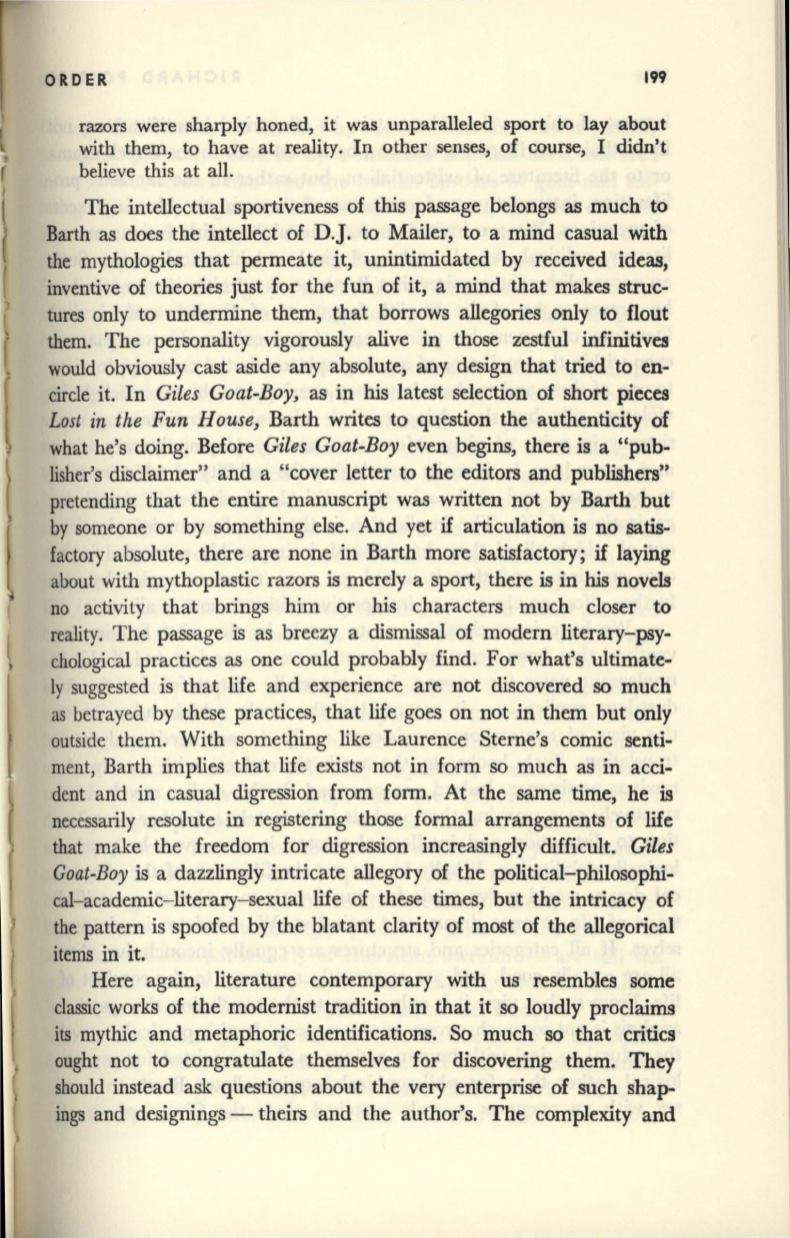
ORDER
199
razors were sharply honed, it was unparalleled sport to lay about
with them, to have at reality. In other senses, of course, I didn't
believe this at all.
The intellectual sportiveness of this passage belongs as much to
Barth as does the intellect of D.J. to Mailer, to a mind casual with
the mythologies that permeate it, unintimidated by received ideas,
inventive of theories just for the fun of it, a mind that makes struc–
tures only to undermine them, that borrows allegories only to flout
them. The personality vigorously alive in those zestful infinitives
would obviously cast aside any absolute, any design that tried to en–
circle it. In
Giles Goat-Boy,
as in
his
latest selection of short pieces
Lost in the Fun House,
Barth writes to question the authenticity of
what he's doing. Before
Giles Goat-Boy
even begins, there is a "pub–
lisher's disclaimer" and a "cover letter to the editors and publishers"
pretending that the entire manuscript was written not by Barth but
by someone or by something else. And yet if articulation is no satis–
factory absolute, there are none in Barth more satisfactory; if laying
about with mythoplastic razors
is
merely a sport, there
is
in
his
novels
no activity that brings him or his characters much closer to
reality. The passage
is
as breezy a dismissal of modern literary-psy–
chological practices as one could probably find. For what's ultimate–
ly suggested is that life and experience are not discovered so much
as
betrayed by these practices, that life goes on not in them but only
outside them. With something like Laurence Sterne's comic senti–
ment, Barth implies that life exists not in form so much as in acci–
dent and in casual digression from form. At the same time, he
is
necessarily resolute in registering those formal arrangements of life
that make the freedom for digression increasingly difficult.
Giles
Goat-Boy
is
a dazzlingly intricate allegory of the political-philosophi–
cal-academic- literary-sexual life of these times, but the intricacy of
the pattern is spoofed by the blatant clarity of most of the allegorical
items in it.
Here again, literature contemporary with us resembles some
classic works of the modernist tradition in that it so loudly proclaims
its mythic and metaphoric identifications. So much so that critics
ought not to congratulate themselves for discovering them. They
should instead ask questions about the very enterprise of such shap–
ings and designings - theirs and the author's. The complexity and


